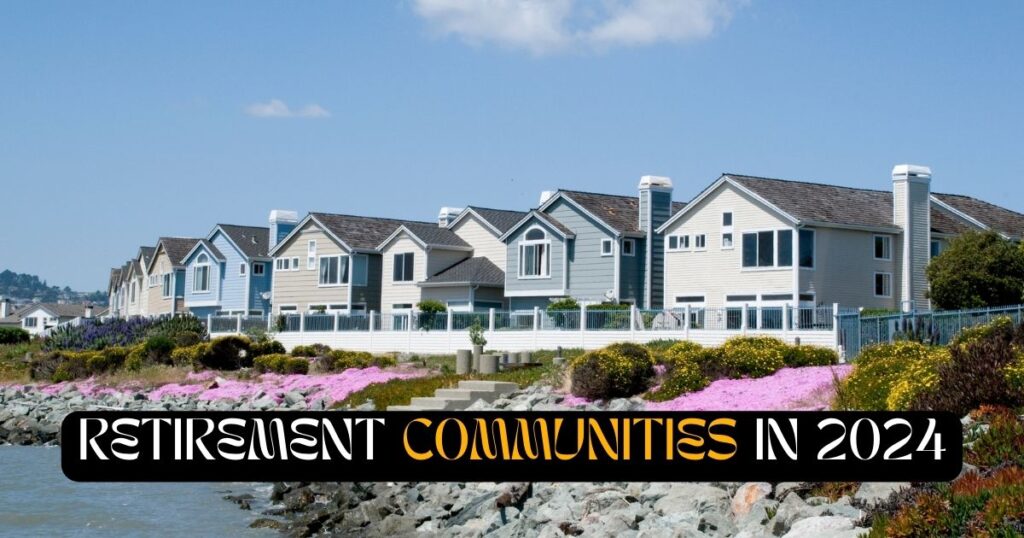Choosing a retirement community is an important life decision. The options, amenities, costs, and senior living models continue advancing rapidly. Before 2024, the variety of retirement communities will be greater than ever.
Selecting the ideal community hinges on aligning priorities with the right lifestyle, services, and setting. Modern retirement communities have evolved far beyond outdated notions of “old age homes.” Today’s communities integrate cutting-edge amenities with vibrant social scenes tailor-made for seniors.
As baby boomers redefine traditional retirement, the demand for diverse, engaging communities is booming. Though independent living remains popular, many older adults now delay assisted living and skilled nursing until later ages. In 2024, forward-thinking communities blending hospitality, care, and technology will thrive. This blog provides an outlook on key retirement community trends to help find the perfect fit.
Projected Growth in Retirement Communities
Demand for senior housing continues to rise as population demographics shift. By 2040, 21.6% of the U.S. population will be over 65, up from just 15% in 2014. The 85+ population is projected to more than double by 2040 as lifespans increase. AARP estimates 88% of seniors want to stay in their homes indefinitely. To bridge gaps, innovative communities are emerging. The 2024 outlook includes:
- Mainstream adoption of “aging in place” models with tiered levels of care
- Technology integration from smart-home automation to telehealth services
- Increased specialization from luxury to niche communities like veterans
- Hybrid home-sharing networks for extra support and cost savings
- New community funding models like equity ownership
With greater variety and booming demand, retirement communities are positioned for tremendous growth Before 2024.

Key Community Types and Models
Retirement communities generally fall into the following models, each with varying levels of care:
Independent Living (IL) – Residents live independently in apartments or homes with access to amenities and activities. Limited or no personal care is provided.
Assisted Living (AL) – Assistance is available for daily activities like meals, bathing, medication management, and mobility. Staff do not provide substantial medical care.
Skilled Nursing Facilities (SNF) – Round-the-clock nursing care and monitoring is provided, usually for short-term rehabilitation or complex health needs.
Continuing Care Retirement Communities (CCRC) – A campus provides tiered levels of care from independent to assisted living and then skilled nursing as needs change over time.
Active Adult Communities – For active, healthy adults over 55 seeking an engaged lifestyle among peers without needing personal care or support.
Home and Community-Based Services – Assistance enabling seniors to remain at home through resources like home health, meal delivery, transportation, and respite care.
With greater options, retirees can choose the right model to meet current and future needs while maximizing independence.

Key Factors in Choosing Retirement Housing
How do you select the ideal community? Important factors include:
Budget – Monthly fees for rent, services, and amenities vary greatly. Evaluate costs for your preferred lifestyle.
Location – Do you want urban or rural? Proximity to family and activities? Mild climate? Assess locations meeting needs.
Health Care Access – What care resources are available on-site or nearby? Prioritize convenient access.
Amenities – Consider must-haves like walking trails, pools, clubs, restaurants, lifelong learning, etc.
Community Vibe – Ensure the culture and demographics fit your personality and goals. Visit multiple times.
Home Style – Choose an apartment, condo, cottage, or shared home based on space needs and design preferences.
Staff – Are staff trained, accredited, experienced, and warm? Good staff means everything.
Safety – Review emergency response systems, building security, maintenance, and staff background checks.
Contract Terms – Understand all costs, rate changes, policies, care options, and contract durations before signing.
Thoroughly evaluating all factors results in the best community match.

Key Retirement Community Trends for 2024
Exciting changes lie ahead. Some top predicted community trends shaping 2024 include:
Eco-Friendly Design
Sustainable finishes, renewable energy, smart water conservation, organic landscaping, and energy-efficient buildings will become mainstream.
Mobile Health Tech
On-demand telehealth, MHealth apps, wearable monitors, and mobile clinic visits will enable proactive, accessible care.
Farm-to-Table Dining
Community gardens, on-site chefs, and partnerships with local farms will provide fresh, sustainable meals.
Smart Home Automation
Voice-activated A/V, lighting, and environmental controls will simplify and enhance independent living.
Intergenerational Interactions
Programs bringing children, families, and younger volunteers on-site will combat isolation and foster connections.
Flexible Aging Options
More communities will offer membership tiers, shared housing networks, and home-sharing to improve access and affordability.
Specialized Communities
Niche communities will provide tailored experiences ranging from Afrocentric to LGBTQ-focused to creative arts enclaves.
Digital Literacy Programs
On-site tech training, clubs, and resources will empower digital skills and combat misinformation.

Palliative Care
Access to holistic, compassionate end-of-life, hospice, and palliative care will further normalize later-life conversations.
The communities achieving long-term success will be those embracing human-centric design, innovation, inclusion, and purpose.
Conclusion
Selecting a retirement community Before 2024 provides exciting options metaphorically and literally suiting individual tastes. The key is aligning priorities like lifestyle, amenities, care needs, budget, location, and community personality. With more models catering from niche interests to comprehensive care, prospective residents have more choices than ever. Partnerships with hospitals and home care providers also assure a continuum of support.
Though finding the perfect community still requires due diligence, creativity, and an open mindset, today’s options enable truly customizing retirement living. The ability to transition tiered care and amenities seamlessly as needs evolve allows older adults to maximize vitality and independence at every stage. Retirement housing has come a long way and Before 2024 will achieve even greater resident satisfaction.
FAQs about Retirement Communities
What are the main types of retirement communities?
The main models are independent living, assisted living, skilled nursing, continuing care (CCRC), active adult, and home community-based services. Each provides different levels of care.
What amenities are people looking for in retirement communities today?
Top amenities include fitness centers, walking trails, pools, restaurants, clubs, lifelong learning, smart home tech, community gardens, and intergenerational programs.
How do you evaluate and choose a retirement community?
Consider your budget, location preferences, healthcare needs, desired amenities, community culture and demographics, home style, staff quality, safety, and contract terms.
What are some key trends for retirement communities in 2024?
Leading trends will be eco-friendly design, mobile health tech, farm-to-table dining, home automation, intergenerational interactions, flexible models, specialized communities, and digital literacy.
Why are retirement communities growing in popularity?
They allow seniors to enjoy community living while easily accessing amenities and care. Varied options suit different needs and budgets.



